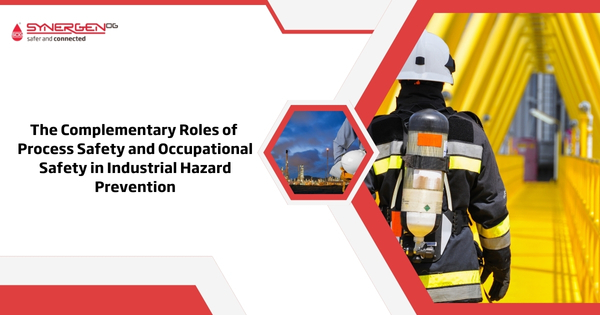When it comes to ensuring safety in the workplace, two key aspects play a critical role: Process Safety and Occupational Safety. While they have different focuses, they are both essential in preventing industrial hazards and maintaining a safe work environment. In this article, we will explore the complementary roles of Process Safety and Occupational Safety, and how they together contribute to effective hazard prevention in industrial settings.
Understanding Process Safety
Process Safety primarily deals with the management of dangers associated with processing facilities that handle hazardous materials. It encompasses the design, operation, maintenance, and modification of process plants, with the aim of preventing major accidents such as explosions and fires. Process Safety involves implementing proper procedures, controls, and employee training to mitigate risks.
Examples of Process Safety Hazards
- Fires and explosions
- Toxic releases
- Reactive chemical incidents
- Pressure vessel rupture
- Equipment failure
Understanding Occupational Safety
Occupational Safety focuses on protecting workers from hazards they may encounter in their day-to-day activities. It involves creating a safe and healthy working environment by addressing various aspects such as ergonomics, slips and trips, manual handling, exposure to hazardous materials, and machinery hazards. Occupational Safety requires identifying, assessing, and mitigating risks, along with regular inspections and employee training.
Examples of Occupational Safety Hazards
- Slips, trips, and falls
- Electrical hazards
- Ergonomic hazards
- Exposure to hazardous materials
- Fire and explosion hazards
- Machinery hazards
The Complementary Roles of Process Safety and Occupational Safety
While Process Safety and Occupational Safety have distinct focuses, they work in harmony to prevent industrial hazards and ensure the well-being of workers. Here’s how they complement each other:
1. Prevention of Major Accidents vs. Prevention of Injuries and Illnesses
Process Safety mainly aims to prevent major accidents that could have catastrophic consequences. It focuses on identifying and mitigating risks associated with hazardous materials and processes. On the other hand, Occupational Safety focuses on preventing injuries and illnesses that could occur in the workplace. By addressing both, organizations can minimize the chances of accidents and injuries.
2. Addressing Risks in Different Areas
Process Safety focuses on risks associated with handling hazardous materials, process plants, and equipment. It requires careful management and control to prevent accidents. Occupational Safety, on the other hand, addresses risks present in the working environment, including physical hazards, ergonomic risks, and exposure to hazardous substances. By considering both types of risks, organizations can ensure comprehensive hazard prevention.
3. Collaborative Efforts
Process Safety programs are typically developed and implemented by both employers and regulatory agencies. The involvement of regulatory bodies ensures adherence to industry standards and regulations. Conversely, Occupational Safety programs are primarily developed and implemented by employers. This collaboration between employers and regulatory bodies ensures a comprehensive approach to safety.
The Importance of Process Safety and Occupational Safety
Both Process Safety and Occupational Safety are of utmost importance in maintaining a safe work environment and preventing industrial hazards.
Process Safety is important because:
- Accidents involving the release of hazardous materials can cause severe harm if precautions are not in place.
- Effective process safety management minimizes the consequences of accidents and prevents incidents altogether.
Occupational Safety is important because:
- Its main goal is to protect workers from injuries or illnesses that may occur on the job.
- By taking proactive steps to prevent hazards, employers can create a safer workplace for their employees.
Conclusion
In industrial settings, Process Safety and Occupational Safety are vital components of effective hazard prevention. Process Safety ensures the safe handling of hazardous materials and prevents major accidents, while Occupational Safety protects workers from various workplace hazards. By considering the complementary roles of these safety aspects, organizations can create comprehensive safety frameworks that prioritize both the prevention of major accidents and the well-being of workers. Together, Process Safety and Occupational Safety contribute to maintaining a safe and healthy work environment.
Read more on process vs occupational safety – https://synergenog.com/process-safety-vs-occupational-safety/
SynergenOG – Process Safety Consultant

Leave a comment